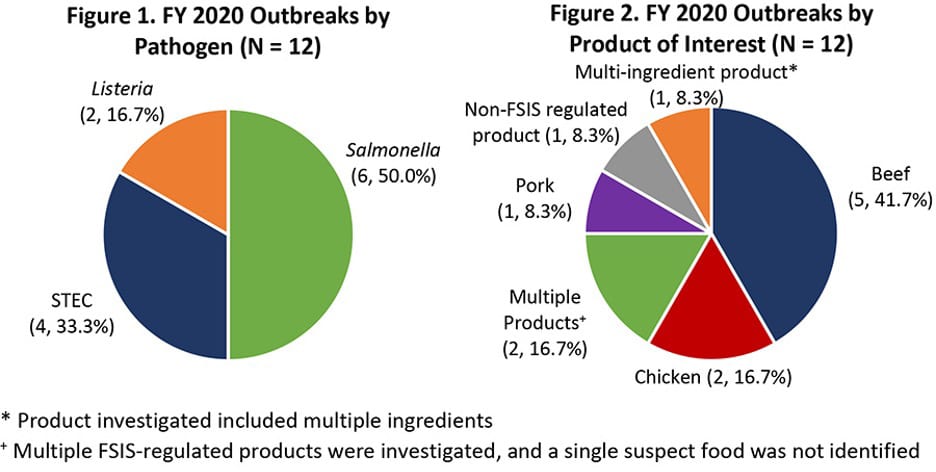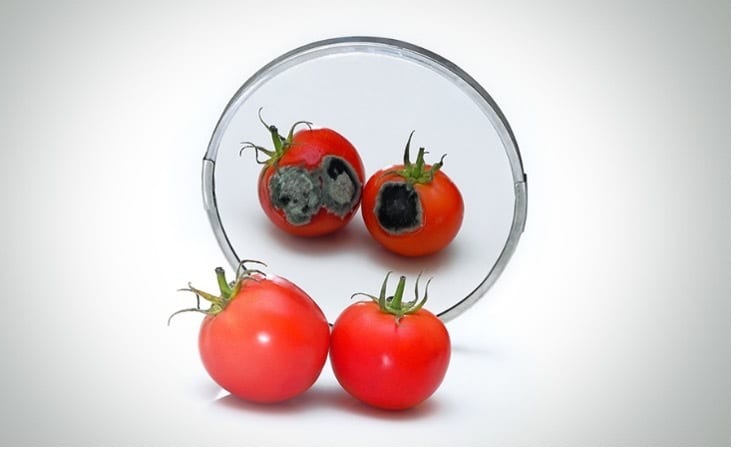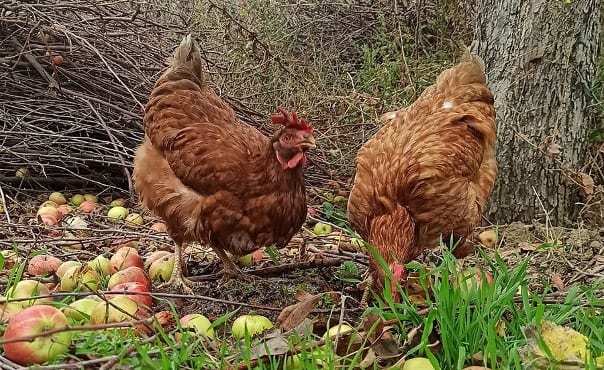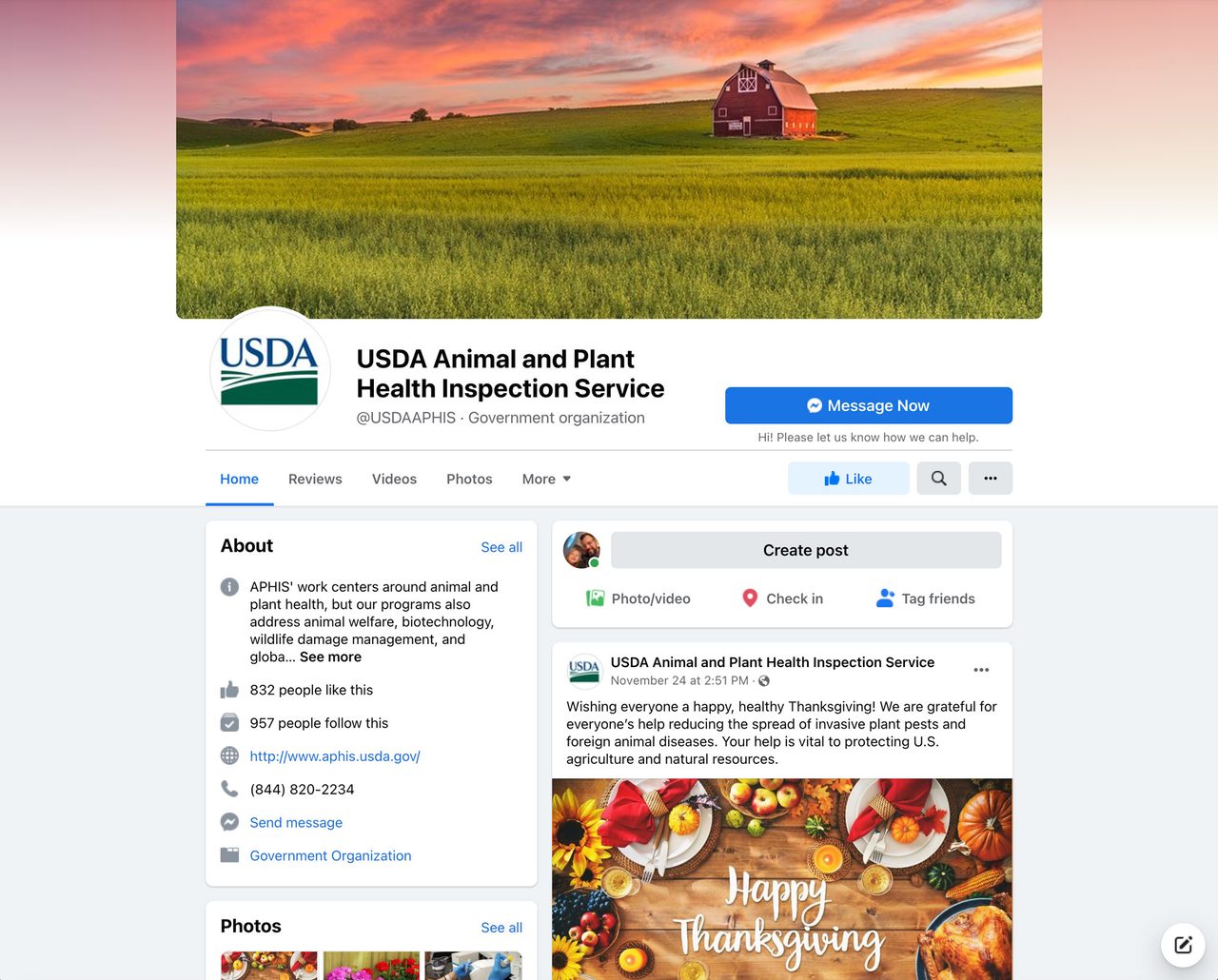
SCROLL
DOWN
FSIS Releases FY2020 Foodborne Illness Outbreak Investigations Summary Report
During Fiscal Year 2020, the U.S. Department of Agriculture’s Food Safety and Inspection Service (FSIS) investigated 12 different outbreaks. The outbreaks included about 400 illnesses and more than 150 hospitalizations.
The most common pathogens involved were Salmonella (50 percent), followed by STEC (33 percent), with beef (41.7 percent) being the most common food product of interest. The six Salmonella outbreaks investigated included five serotypes: Dublin, Enteritidis, I 4,[5],12:i:-, Thompson, and Typhimurium. All four STEC outbreaks were caused by serogroup O157:H7 (see Figure 1).
Image credit: Dr_Microbe/iStock / Getty Images Plus via Getty Images

FSIS conducts assessments of outbreaks in order to prevent foodborne illness and to protect public health. After-action reviews (AAR) are also routinely conducted at the end of foodborne outbreak investigations to identify lessons learned that can help improve response and prevent future illnesses.
FSIS conducted an AAR in collaboration with public health partners for a S. Dublin outbreak associated with ground beef. Investigators used an Electronic Benefit Transfer (EBT) card to identify specific products that were purchased by the case. By using the EBT card records plus retail grinding records, the investigators were able to identify the FSIS-regulated supplier of the ground beef.
Another AAR was conducted for an FY2020 outbreak of Escherichia coli O157:H7 associated with ground beef. It identified the "intended use" of beef as an important issue, as the investigators noticed that retailers had used whole cuts of beef that had been produced by the inspected establishment as intended for intact use, and not intended to be ground, to produce raw ground beef.
There are minimal safety concerns with intact cuts externally contaminated with E. coli O157:H7, as normal consumer cooking to a rare or medium internal state will eliminate pathogens on the exterior. However, ground beef and mechanically tenderized steaks are higher-risk products because pathogens may move throughout the product and consumer cooking to a rare or medium internal state will not eliminate all E. coli O157:H7.
Because of this difference, FSIS generally requires that establishments employ more rigorous controls to beef that is intended to be ground (or otherwise non-intact), when compared to intact beef.
To see additional FSIS AAR reports and examples of how FSIS has applied outbreak lessons learned toward illness prevention, visit Foodborne Outbreak Investigation Outcomes—Response and Prevention.
GFSI Announces First Food Safety Auditor Training and Development Benchmarking Requirements
On November 4, 2021, the Global Food Safety Initiative (GFSI), a Coalition of Action of the Consumers Goods Forum, launched its first-ever set of Benchmarking Requirements for food safety auditor Professional Recognition Bodies. GFSI’s aim is to attract and retain talent into the food safety profession by raising the profile of the profession of auditing, and focusing entry requirements on competence.
Recently, the food safety industry has had difficulty recruiting and retaining auditors. This has put a strain on the Certification Bodies’ ability to keep up with the increasing demand in food safety audits. Due to increasingly complex and duplicated requirements applying to new and existing auditors, the situation has worsened, including the increasing GFSI Benchmarking Requirements for Certification Program Owners on auditors.
To make this easier, GFSI has now implemented a new recognition program for Professional Recognition Bodies in the sector. This also means that the food industry can rely on this registration and validation to verify the competency of auditors.
“We’re confident that the launch of these benchmarking requirements will help to protect the vital role of food auditors, and to increase the take-up of this profession. The current qualifications and industry experience required for a food safety auditing career are stringent and specific, which narrows the field of potential recruits dramatically," said Erica Sheward, director of GFSI.
“By harmonizing training and professional development across the industry, we can make food safety auditing an accessible, attainable, and desirable profession for many more people—helping to safeguard the future of an essential component of the food safety ecosystem.”
The Benchmarks form part of the larger GFSI Race to the Top framework, which strives to improve trust, transparency, and confidence in GFSI-recognized certification and audit outcomes. Download the new Benchmarking Requirements here.

FDA Releases New Food Fraud Webpage
The U.S. Food and Drug Administration (FDA) has released a new website on economically motivated adulteration (EMA), including food fraud. The purpose of the website is to keep businesses and consumers informed on the latest food fraud developments.
The website includes links on how to report food fraud; examples of food adulteration; how food fraud is detected and monitored; enforcement and legal consequences, such as recalls, seizures, and import refusals; guidance documents to assist manufacturers and importers; and a list of import alerts.
EMA occurs when "someone intentionally leaves out, takes out, or substitutes a valuable ingredient or part of a food," according to FDA. EMA also occurs when a substance is added to a food to make it appear better or of greater value.
Food fraud is a common type of EMA that FDA investigates, but EMA also occurs with other products, including animal food and cosmetics. Some types of EMA are also misbranding violations. Estimating how frequently food fraud occurs or its exact economic impact can be challenging because food fraud is designed to avoid detection. Outside estimates by experts have found that food fraud affects 1 percent of the global food industry at a cost of approximately $10–$15 billion per year, although more recent expert estimates peg the cost as high as $40 billion per year.
Food fraud can also lead to major health issues and even death. Some examples include lead poisoning from adulterated spices and allergic reactions to a hidden or substituted ingredient that contains a small amount of just one food allergen.
Click here to visit FDA’s new EMA website.

Image credit: Dr_Microbe/iStock / Getty Images Plus via Getty Images
Study Examines Role of Dust Particles in Transferring Pathogens to Produce
Although research has been carried out on the role of water in foodborne outbreaks—and, to a smaller extent, the role of soil—not much has been examined on the potential for dust particles to transfer pathogens onto produce.
Kelly Bright, Ph.D., University of Arizona, aims to gain a better understanding of the role of dust in pathogen transfer. Her project, “When the E. coli hits the fan! Evaluating the risks of dust-associated produce cross-contamination,” will allow her and her fellow researchers to develop best management practices (BMPs) to assist growers in understanding the risks and implement mitigation measures for dust-mediated transfer of pathogens to produce.
Bright will conduct laboratory experiments and field studies in Arizona’s farming region. She will study conventionally and organically grown spinach and romaine lettuce. In Georgia, researchers from the University of Georgia will conduct the same laboratory and field studies under the state’s more humid atmospheric conditions. They will study bell peppers and tomatoes, two of Georgia’s predominant crops. Bright says that conducting the research in two diverse production regions will broaden the usefulness of the results.
The scientists inoculated soil particles with a known quantity of a pathogen, including strains of Salmonella Newport, S. Typhimurium, and Escherichia coli O157:H7, to determine the differences in survivability and transferability among the microorganisms. The original pathogen samples were collected from cattle, chickens, or lettuce and modified to include antibiotic resistance to improve their detection in environmental attributes such as dust.
To measure possible transfer, pathogen-inoculated particles are applied to plants using a "duster" to simulate wind-blown dust. Crops are grown in biosafety level 2 growth chambers, where the researchers can control environmental conditions such as relative humidity. The scientists will evaluate humidity, soil characteristics, and agricultural practice on pathogen recovery, and the crop will be harvested to measure bacterial persistence.
Field studies will include collecting air samples at various distances from beef and/or poultry production facilities. These studies will be conducted over multiple days and under various weather conditions. The researchers will also examine the dust samples collected from the field’s air to detect the presence of generic and pathogenic E. coli and Salmonella species. They will also monitor for the presence of biomarkers that could indicate fecal contamination, such as fecal genetic markers, bile salts, and metabolites.
The researchers will study the laboratory data and field sampling results to develop a quantitative microbial risk assessment (QRMA) model. Bright says that the results will be distilled to more user-friendly grower BMPs. She and the other researchers also plan to include possible mitigation measures and buffers between produce fields and livestock operations.

USDA Announces New Comprehensive Efforts to Reduce Salmonella Illnesses Linked to Poultry
The U.S. Department of Agriculture’s (USDA’s) Food Safety and Inspection Service (FSIS) has revealed that it will be mounting a stronger and more comprehensive effort to reduce Salmonella illnesses associated with poultry products. USDA is starting several key activities to gather information and data necessary to support future action, with the goal of moving closer to the national target of a 25 percent reduction in Salmonella illnesses.
Chicago-based STOP Foodborne Illness, the national public health nonprofit, was instrumental in driving the agency’s action and developing a coalition of organizations and advocates that petitioned the government to take action. More than 1 million consumers contract Salmonella annually, and it is estimated that over 23 percent of those are due to consumption of chicken and turkey.
Actions that USDA plan on undertaking include seeking stakeholder feedback on specific Salmonella control and measurement strategies, including pilot projects, in poultry slaughter and processing establishments. Key to this approach will be encouraging preharvest controls to reduce Salmonella contamination coming into the slaughterhouse. The data generated from these pilots will be used to determine if a different approach could result in a reduction of Salmonella illness in consumers.
USDA will be able to leverage its research capabilities and strengthen FSIS’ partnership with the Research, Education, and Economics mission area to address data gaps and develop new laboratory methods to guide future Salmonella policy.
In the meantime, the National Advisory Committee for Microbiological Criteria in Foods, an independent federal advisory committee, will advise on how FSIS can build on the latest science to improve its approach to Salmonella control. The quantity of bacteria, as well as the presence or absence of Salmonella, can impact the likelihood of illness, and FSIS will examine how quantification can be incorporated into this approach. In addition, with emerging science suggesting that not all Salmonella are equally likely to cause human illness, FSIS will focus on the Salmonella serotypes and the virulence factors that pose the greatest risk to public health.

Image credit: Dr_Microbe/iStock / Getty Images Plus via Getty Images

The CEA Food Safety Coalition has appointed former USDA Under Secretary for Food Safety Dr. Elisabeth Hagen as its second Executive Director.

The USDA has nominated Produce Marketing Association’s Chief Science Officer, Dr. Max Teplitski, to Chair the work of the National Advisory Committee on Microbiological Criteria for Foods (NACMCF) on Cyclospora, along with co-chair, Peggy Cook of Neogen Corporation. In total, 13 new members have been appointed to the group.
Global food manufacturer Rich Products has named David Cowperthwait as Chief Supply Chain Officer and Lauren Lopez as Senior Vice President of Foodservice Division. Additionally, Georgia Dachille and Kristin Alongi have been named as the leaders of Rich Products’ new Transformation Office.
Crystal Diagnostics welcomes Michael Kinzie as its new Chief Operating Officer.

U.S. Department of Agriculture (USDA) Secretary Tom Vilsack will nominate Dr. Jose Emilio Esteban to serve as USDA Under Secretary for Food Safety. Dr. Esteban has worked at USDA-FSIS since 2001.
Former Health Department Secretary of Australia, Glenys Beauchamp PSM, has been confirmed as Chairperson of Food Standards Australia New Zealand (FSANZ).
PSSI, a food safety and contract sanitation provider, has named Lupe Gomez as Vice President of Operations for the Southwest Division and promoted Justin Seymour to Vice President of Operations for the Northeast Division.
We R Food Safety!, a provider of food safety software backed by expert consultation, promoted Molly Linden to Senior FS&Q Consultant.


HAGEN
ESTEBAN
LINDEN
BEAUCHAMP
bioMérieux Inc. Obtains AOAC Approval for GENE-UP QUANT Salmonella Assay
bioMérieux’s breakthrough, real-time, quantitative analysis for Salmonella is the first-ever AOAC-approved PCR assay for the enrichment-free quantification of Salmonella in foods. The AOAC Research Institute Performance Tested Methods℠ certification (PTM 061801) is for the true direct quantification of Salmonella by the GENE-UP® QUANT Salmonella assay. Previously, the only AOAC approved solution relied on enrichment-based threshold testing for semi-quantitative understanding of Salmonella levels.

CMX and Mojix Launch First Open-Access Food Traceability Platform
CMX, a provider of cloud-based Enterprise Quality Management Software, and Mojix, a business in item-level intelligence solutions, have announced a strategic partnership for advancing comprehensive end-to-end traceability and food safety, with Mojix launching the first open-data-access, item-level food traceability platform, and CMX being the first solution provider to integrate with the new platform. As part of the agreement, CMX will integrate the Mojix ytemTM platform with the CMX1 platform. The integration gives CMX customers access to fast item-level traceability and visibility into inventory and item lifecycle across supply chain partners and retail locations. The level of traceability of meets the proposed rule 204 of FDA’s Food Safety Modernization Act and facilitates fail-proof quality control via the systematic review of origin, destination, and freshness at each stage of the supply chain.


SideDrive Conveyor Co. Sanitary Conveyor Wins Innovation Award
SideDrive Conveyor Co. won the Innovation Showcase Award for the Bakery, Grains, Nuts, Seeds, and Snacks sector at the 2021 PROCESS EXPO in Chicago, Illinois. SideDrive’s hygienic spiral conveyors use only side-drive, edge-driven technology from Intralox and are fit for virtually any application. Hygienic features of the spiral include an open, accessible design with a drumless (or cageless) design and smooth welds; flat-plate construction and sloped surfaces that ensure easy access to clean quickly and thoroughly while preventing standing water; and USDA-compliant plastic construction.

Hy-Vee Deploys ComplianceMate across Portfolio of Brands
Hy-Vee, a grocer that operates more than 240 retail stores in eight U.S. states, has partnered with CM Systems LLC to deploy the ComplianceMate food safety system across its entire portfolio of brands, including its Italian, Asian, Hickory House, Market Grill, Meat, Seafood, Deli, and Bakery areas. The ComplianceMate system uses a customizable food safety management software that automatically tracks key indicators of food safety risk. As the system generates data, it can alert any level of management—from store level to corporate offices—of potentially unsafe food before the food is served to the public. ComplianceMate also facilitates above-unit auditing for Hy-Vee and its third-party auditing group. Auditors now utilize the ComplianceMate system to gather and preview food safety data prior to entering stores.

Save Foods Completes Pre-Harvest Application Trials on Citrus Fruits
Save Foods, an Israeli-based agrifood tech company focused on developing and selling eco-friendly products specifically designed to extend the shelf life and ensure the safety of fresh fruits and vegetables, has completed a series of successful trials in conjunction with a leading California academic institution. The study’s results demonstrate that the pre-harvest applications of Save Foods’ treatments are effective in mitigating the presence of decay-causing pathogens on the surface of citrus fruits. According to the company, Save Foods’ post-harvest treatments are effective at maximizing the shelf life and safety of fresh produce, and the recent California studies indicate that growers and packers can benefit further from a pre-harvest application.

Freshcare FSQ Standard 4.2 Achieves GFSI Recognition
The Global Food Safety Initiative (GFSI), the Consumer Goods Forum’s Coalition of Action on food safety, and Freshcare Ltd. announced that the Freshcare Food Safety & Quality Standard Edition 4.2 has successfully achieved recognition against GFSI’s Benchmarking Requirements Version 2020.1. The recognition encompasses GFSI scopes BI—farming of plants, and BIII—pre-process handling of plant products. The achievement of global recognition ensures that Freshcare remains at the forefront of Australian and international food safety compliance.


ONLINE & OF NOTE
The Food Industry Counsel, a law firm that provides food safety legal and regulatory consulting services exclusively for food industry clients, offers the Food Recall Reporter, the only searchable, real-time food recall database that allows users to conduct a food recall search for FDA and USDA food product recalls from the year 2000 and later. Users can search food and beverage recalls, the types of food products, the reasons for t2he recalls, and the names of the companies recalling the products. Access to this information can provide insight into past and current food safety trends, and can help food companies avoid the mistakes of others. The Food Recall Reporter is free to use and accessible here.
The U.S. Department of Agriculture’s (USDA’s) Animal and Plant Health Inspection Service (APHIS) recently launched a Facebook page to complement its social media presence on Twitter and LinkedIn and offer additional opportunities to share information and engage with its stakeholders. APHIS’ mission is to protect the health and value of American agriculture and natural resources. The new Facebook page can be accessed here.


